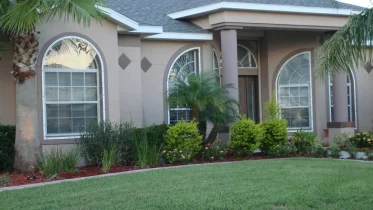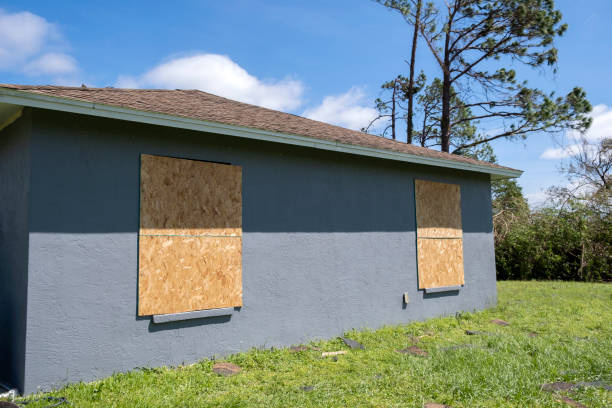Hurricanes and tropical storms are natural phenomena that can wreak havoc on properties, causing extensive damage and posing significant risks to life and safety. As such, residents in vulnerable regions must have effective protection measures in place. Two common options for securing windows and doors during storms are clear hurricane panels and traditional plywood boards. But how do they stack up against each other? Let's delve into the comparison.

Pros and Cons of Clear Hurricane Panels
Advantages of Clear Hurricane Panels
Clear hurricane panels offer several advantages over traditional plywood boards. Firstly, their transparency allows natural light to enter the premises, maintaining visibility during storms. This feature is particularly beneficial for homeowners who wish to monitor outside conditions without compromising safety. Additionally, clear panels are lightweight and easy to handle, simplifying the installation process. They are also reusable, providing long-term cost savings compared to one-time-use plywood.
Limitations of Clear Hurricane Panels
However, clear hurricane panels are not without their drawbacks. While they offer visibility, the clarity may deteriorate over time due to scratches and exposure to the elements. Additionally, they tend to be more expensive upfront compared to plywood boards, which may deter budget-conscious homeowners. Moreover, some users report difficulty in finding compatible hardware for installation, potentially complicating the setup process.

Pros and Cons of Traditional Plywood Boards
Advantages of Traditional Plywood Boards
Traditional plywood boards have been a go-to option for storm protection for many years, primarily due to their affordability. Plywood is readily available and relatively inexpensive, making it an attractive choice for homeowners on a tight budget. Additionally, plywood boards provide sturdy protection against flying debris and high winds when installed correctly.
Limitations of Traditional Plywood Boards
However, plywood boards have their drawbacks. Unlike clear panels, plywood obstructs visibility, creating a dark and enclosed environment inside the property during storms. This lack of visibility can be unsettling for some individuals, particularly those with claustrophobia. Moreover, plywood boards are typically single-use, meaning they must be replaced after each storm, adding to long-term costs and environmental impact.
Cost Comparison
When it comes to cost, clear hurricane panels are generally more expensive upfront compared to traditional plywood boards. While plywood is relatively inexpensive, clear panels require an initial investment that may be prohibitive for some homeowners. However, it's essential to consider the long-term savings associated with reusable clear panels versus the recurring costs of plywood replacement.
Durability and Longevity
In terms of durability, both clear hurricane panels and traditional plywood boards offer adequate protection against storms. Clear panels are typically made from polycarbonate or acrylic materials, known for their strength and impact resistance. Plywood, on the other hand, is susceptible to water damage and may deteriorate over time if not adequately maintained. However, with proper care, plywood can also provide reliable protection for several years.

Ease of Installation
Clear hurricane panels are designed for ease of installation, with lightweight materials and simple mounting systems. Many homeowners find them easy to handle and install without professional assistance. In contrast, traditional plywood boards may require more effort and skill to secure properly, especially for larger windows and doors. Additionally, plywood installation may involve drilling holes into the property's exterior, potentially causing damage if not done correctly.
Aesthetic Appeal
From an aesthetic standpoint, clear hurricane panels offer a more visually appealing solution compared to plywood boards. Their transparency allows natural light to filter through, maintaining the aesthetic appeal of the property even during storms. In contrast, plywood boards create a barricaded look, blocking out light and obstructing views, which can be unappealing to some homeowners.
Effectiveness in Protection
Both clear hurricane panels and traditional plywood boards are effective in protecting windows and doors from storm damage. Clear panels offer impact resistance against flying debris and high winds, similar to plywood. However, their transparency provides an added advantage of maintaining visibility, allowing occupants to monitor outside conditions during storms.
Maintenance Requirements
Clear hurricane panels typically require minimal maintenance, aside from occasional cleaning to remove dirt and debris. Polycarbonate and acrylic materials are resistant to corrosion and deterioration, making them suitable for long-term use with minimal upkeep. In contrast, plywood boards may require more frequent maintenance, including sealing and repainting to prevent water damage and decay.
Environmental Impact
From an environmental perspective, clear hurricane panels may offer a more sustainable solution compared to traditional plywood boards. Clear panels are often reusable and recyclable, reducing waste generation and environmental impact. Additionally, their lightweight design may result in lower transportation emissions compared to heavy plywood sheets.
Local Regulations and Approval
Before installing any storm protection measures, homeowners should ensure compliance with local regulations and building codes. Clear hurricane panels and traditional plywood boards may be subject to specific requirements depending on the area's jurisdiction. It's essential to research local regulations and obtain necessary approvals before proceeding with installation.
Customer Reviews and Satisfaction
Customer reviews can provide valuable insights into the performance and satisfaction levels of both clear hurricane panels and traditional plywood boards. By researching feedback from other homeowners who have used these products, prospective buyers can make informed decisions based on real-world experiences and recommendations.
In conclusion, the choice between clear hurricane panels and traditional plywood boards ultimately depends on individual preferences, budget constraints, and specific requirements. Clear panels offer advantages such as visibility, ease of installation, and aesthetic appeal but come at a higher upfront cost. Plywood boards, on the other hand, are more affordable but lack transparency and may require frequent replacement. By carefully weighing the pros and cons of each option, homeowners can select the most suitable solution for their storm protection needs.
FAQs
-
What are clear hurricane panels made of? Clear hurricane panels are typically made from polycarbonate or acrylic materials, known for their strength and impact resistance.
-
Can clear hurricane panels be reused? Yes, clear hurricane panels are designed for reusability, providing long-term cost savings compared to one-time-use plywood boards.
-
Do clear hurricane panels provide better visibility than plywood boards? Yes, clear hurricane panels offer better visibility during storms compared to traditional plywood boards, allowing occupants to monitor outside conditions.
-
Are clear hurricane panels more expensive than plywood boards? Yes, clear hurricane panels are generally more expensive upfront compared to traditional plywood boards. However, they may offer long-term cost savings due to reusability.
-
How do I know if clear hurricane panels are approved for use in my area? Before installing clear hurricane panels, it's essential to research local regulations and obtain necessary approvals from relevant authorities to ensure compliance with building codes and requirements.
Comments on “How do Clear Hurricane Panels Compare to Traditional Plywood Boards?”